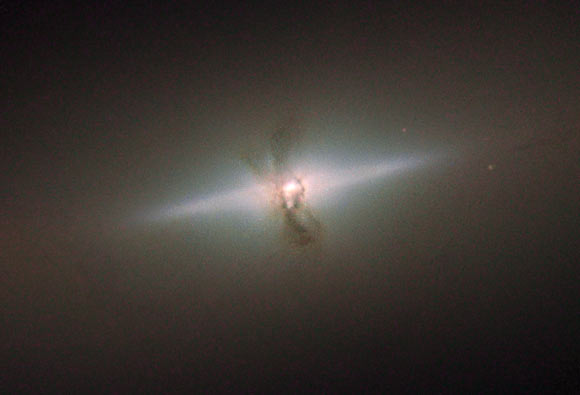This new image from NASA’s Hubble Space Telescope shows the beautiful and elegant galaxy NGC 4111.
Lying around 31 million light-years from us in the constellation of Canes Venatici, NGC 4111 is a 10.7 magnitude lenticular galaxy.
According to astronomers, lenticular galaxies are an intermediate type of galaxy between an elliptical and a spiral.
They host old stars like elliptical galaxies and have a disk like a spiral.
However, that’s where the similarities end: they differ from ellipticals because they have a bulge and a thin disk, but are different from spirals because lenticular discs contain very little gas and dust, and do not feature the many-armed structure that is characteristic of spirals.
In this Hubble image we see the disc of NGC 4111 edge-on, so it appears as a thin sliver of light on the sky.
At first sight, NGC 4111 looks like a fairly uneventful galaxy, but there are unusual features that suggest it is not such a peaceful place.
Running through its centre, at right angles to the thin disc, is a series of filaments, silhouetted against the bright core of the galaxy.
These are made of dust, and scientists think they are associated with a ring of material encircling NGC 4111’s core.
Since it is not aligned with the galaxy’s main disc, it is possible that this polar ring of gas and dust is actually the remains of a smaller galaxy that was swallowed up by NGC 4111 long ago.
This image of NGC 4111 was made from separate exposures taken in the visible and ultraviolet portions of the spectrum with both Hubble’s Wide Field Planetary Camera 2 (WFPC2) and its Advanced Camera for Surveys (ACS).
It is based on data obtained through three filters: a broadband red (F702W) filter, a green (F547W) filter and a near-UV (F330W) filter.








